
 |
| Enabling Framework for Community Regeneration |
| background | framework | workshop | timeline |
| jump to: | guiding principles | mission statement | framework | toolkit | example |
| Introduction |
Indonesians linked by family, friendship and village networks helped each other following the recent tsunami tragedy, taking in orphaned children and sharing meager resources. These small-scale horizontal support systems stand in stark contrast to the government’s proposal to resettle huge numbers of people in temporary barracks where they will face greater likelihood of disease, crime and emotional stress. Recovering from the tsunami will require much more than just physical shelter. People must be able to rebuild their lives as well as their homes. Sustainable development and rebuilding efforts are most successful when they are deeply rooted in the community. A top-down rebuilding approach fails to recognize the resources that even the most marginalized people have at their disposal. Projects that include true participation from community members are most likely to be culturally appropriate, effective in the long term and to take full advantage of local knowledge and resources. There’s an inherent tension when we talk about participatory community process from thousands of miles away. What can be done from afar to help communities rebuild? What is the role of the design professional/student in a process that purports to be community-based? Our project attempts to answer those fundamental questions by addressing the following:
|
| Guiding Principles | 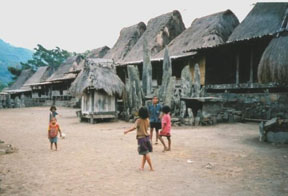 |
| • Recognize the community as the expert • Overlap uses and functions over time/space • Recycle inputs within the system as many times as possible • Maintain a long-term vision |
| Mission Statement |
|
| This project is an attempt to create a system that enables its user to restore the health of his or her community.
The approach begins with a set of considerations through which a community’s existing and future resources and needs are assessed. This initial evaluation allows the community to decide on programs and technologies that best address specific projected needs, which can be implemented over an identified amount of time. |
| Framework | |
The sustainable rebuilding framework we propose has three components – assessment, selection and implementation, which are explained in more detail below. Its goal is to enable people to set projects in motion to meet immediate needs without compromising long-term well-being. Creative, innovative solutions are generated by making connections between components that meet seemingly isolated needs like food, water and shelter. These innovations find ways to meet multiple needs simultaneously in a particular context. While solutions are best if generated by the community, we can improve outcomes by applying our skills as landscape architects to help with physical design, strategic planning and technological expertise to get maximum benefit from the available resources.
|
|
........................ |
|
Select |
Implement |
Reassess |
|||
The first step in community rebuilding is to assess a community’s needs and resources, both immediate and long-term. The livelihoods model (see background research) is a useful tool for this initial assessment. It suggests five categories of resources (or capital) that combine to generate an individual’s (or a community’s) livelihood. |
||||||
Needs and resources can be assessed by members of the community through a series of straightforward questions: |
|
| Assess | Implement |
Reassess |
||||
Once resources and needs are assessed, the community can prioritize among needs and select programs and technologies that fit their particular situation. The enabling framework provides a “toolkit” of possible technologies and examples from other places that can serve as inspiration. The goal of this approach, however, is not to impose answers that have worked in other places but to generate innovative, context-appropriate solutions. Components of the toolkit can be understood within the five-element livelihoods framework, but the most effective solutions will likely overlap several categories. Examples of possible programs and technologies are shown below: |
||||||
|
natural |
|||
| agroforestry, sustainable agriculture and forestry practices, community gardens, home gardens, soil desalinization, composting, night soil, seed banks, plant nurseries, coral reef rejuvenation, scenic restoration, natural disaster buffers, recreational opportunities | |||
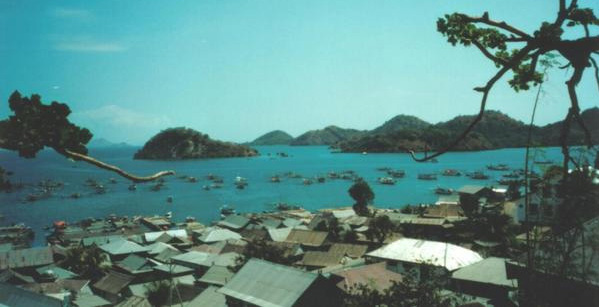 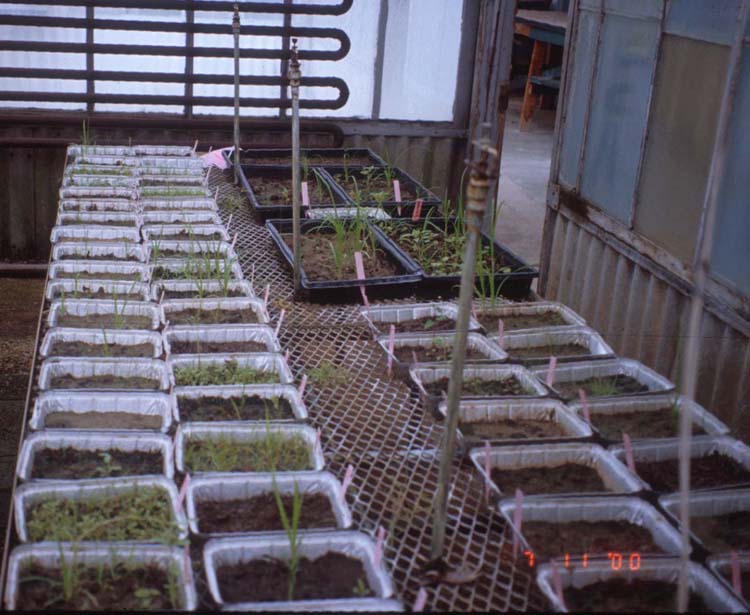  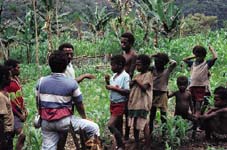 |
| social | |||
community centers, public space, community meeting spaces, community gardens, religion, rituals and festivals, traditions, family planning |
|||
  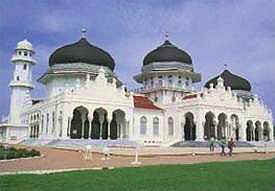 |
| human | |||
| training programs, schools, libraries, physical and mental health, crafts and trades, expertise, access to information | |||
 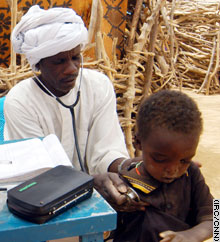 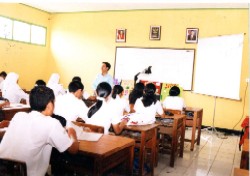 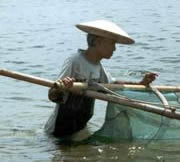  |
| physical | |||
| training facilities, water treatment, water collection, waste management, transportation, equipment, materials, energy, shelter, emergency response, shared facilities | |||
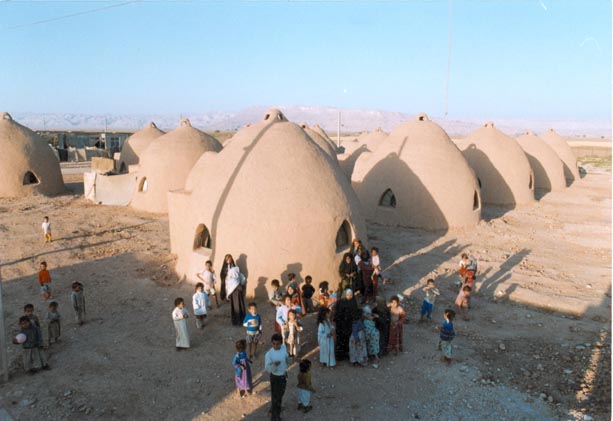 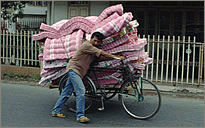 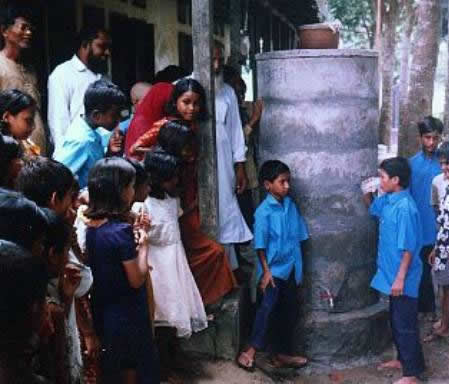 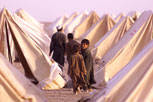 |
| financial | |||
| money for credit, savings, pensions, tourism, outside aid, export of goods and services, lending programs, co-ops | |||
 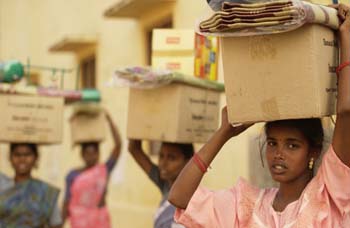  |
Assess |
Select |
Reassess |
||||
Selected programs and technologies are implemented with a vision of how they can adapt over the long term. A building might be erected as a temporary shelter, for example, integrating cooking facilities. Once families move to their own homes, they continue to use the community kitchen and a shared food garden until they are able to build separate kitchens at home. The building then becomes an elementary school with an understanding that it will become community center once a new schoolhouse is built. The benefit of small interventions is maximized when they are understood as part of a holistic system – a community’s efforts become greater than the sum of its parts. |
||||||
Assess |
Select |
Implement |
||||
|
It is important to emphasize that the goal of this process is not to develop a comprehensive plan that progresses linearly toward a predefined goal. Communities can use this framework to continuously reassess needs and resources in response to their changing situation. The framework also recognizes the power of small interventions to reduce (or change) needs, generate more resources and initiate a feedback loop to improve community well being. |
||||||
| An Example of a Practical Application |
"Conventional wisdom frequently leads to design choices that may make the problem worse. Conversely, there is much experience from sustainable development experts that can prompt one solution to leverage others. Latrines, for instance, are usually located in the driest part of the site. RMI’s biological design colleagues, however, are quick to point out that by using the wettest part of the site, one can create ponds under the latrines, add a mixture of organisms (a “biological starter kit”), and a week or two later a highly productive ecosystem will be processing the human wastes into pathogen-free nutrients. Those in turn can be used to create excellent and culturally appropriate high protein foods—some of which specifically boost human immune competence. So hooking up two seemingly unrelated linear needs—food in and waste out—can help meet both at lower cost." |
| *Diagram of a Living Machine designed to recycle water for reuse in flushing toilettes |
| http://www.audubon.org/ |
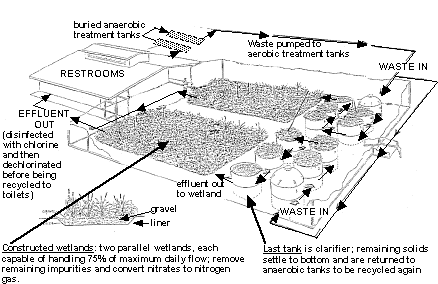 |